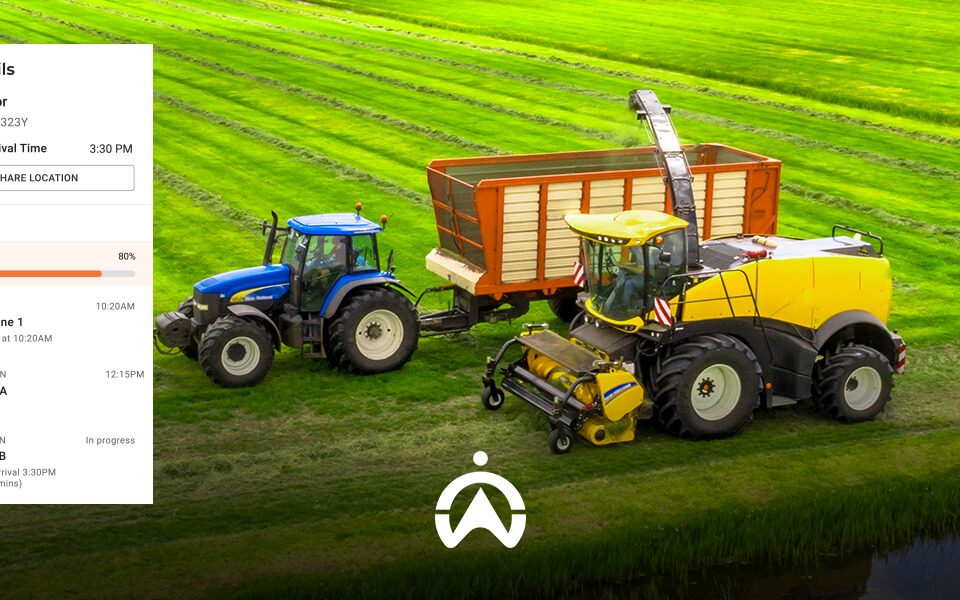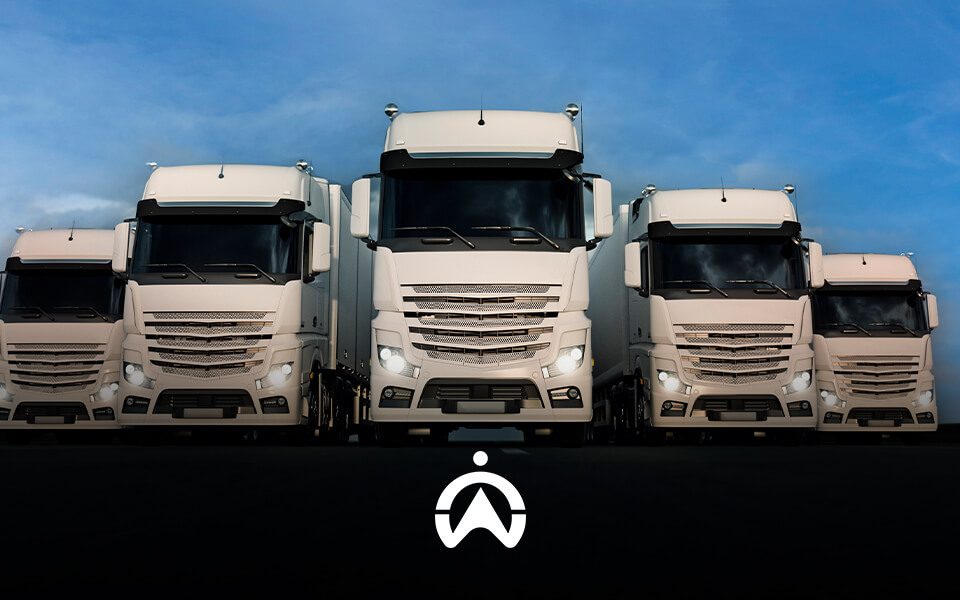Manual vs. Automatic: Which Is Better for Your Fleet?
Businesses have important criteria to ensure their vehicles are a perfect match for their specific requirements. It’s all about being the perfect couple, from zippy motorcycles delivering speedy treats to rugged trucks for furniture or construction crews. After all, birds of a feather fleet together.
But what about automatic vs manual vehicles? Which suits your business best?
Let’s dive in to get the answer and see which transmission type is favoured most by South African businesses.
Fleet landscape in 2024
If your business is in the automotive industry, I bet you’ve noticed some changing trends impacting your vehicle sales. Since the introduction of automatic and electric vehicles (EVs), more and more businesses from various industries are starting to buy and use them.
If consumer sales are anything to go by, South African motorists have tipped the scale in favour of automatic vehicles. For the first time in well… ever, automatic vehicles have outsold manual vehicles based on November 2023 vehicle sales, reported Cars.com with the help of Lightstone Auto. Even though this proves that more automatic vehicles have recently been sold in South Africa, the information used was only based on vehicles like passenger cars, including SUVs, and light commercial vehicles. So, it’s also interesting to note that a medium to extra-heavy commercial vehicle like a truck is not part of this new trend.
.png)
Manual vs automatic transmission: What’s the difference?
When it comes to choosing between the two, most fleets don’t. They opt for having both types of vehicles in their fleet so they can reap the benefits of both transmission types.
Let’s break down the differences between the two.
Reliable manual vehicles:
These are the classic cars we all know and mostly love.
These vehicles have a stick shift and a clutch pedal for the driver to manually speed up, slow down, and control the vehicles they drive. This type of vehicle gives full control to the driver to operate as they please.
Here are the benefits of manual vehicles:
Improved vehicle control: With manual transmission, drivers have more control over gear shifts, allowing them to adjust to road conditions and terrain as they please.
Lower initial cost: Manual vehicles are typically cheaper for businesses to buy upfront compared to autos, making them a more cost-effective option for buyers with tight budgets or businesses with smaller fleets.
Better fuel consumption: Manual transmissions can potentially improve fuel economy as they allow drivers to shift gears while driving for maximum fuel efficiency, but this benefit solely depends on driving behaviour.
Affordable mechanism: Manual transmission gearboxes have fewer complex mechanical components than automatic ones, potentially lowering the chances of expensive repairs causing extended downtime.
Modern automatic vehicles:
Automatic vehicles have a transmission type that uses computers and sensors to identify the vehicle’s speed and change gears automatically, cutting out the need for manual gear shifting by the driver.
Despite the technological innovation of automated gear changes, this type of transmission isn’t necessarily the better option for every business, but it does have advantages that many organisations can’t ignore.
- User-friendly: Unlike manual transmissions, automatic vehicles don’t take you that long to get used to driving or operating, making them more user-friendly.
- Enhanced safety: With automatic transmissions, drivers can keep both hands on the wheel at all times, promoting safe driving and increased driver behaviour awareness on the road.
- Easier hill driving: Drivers never have to worry about their vehicle rolling backwards on a hill. An automatic transmission gearbox prevents vehicles from rolling back on steep inclines, providing a smooth driving experience without needing pedal balancing.
- Reliable performance: These vehicles rarely stall like their manual counterparts, ensuring a smooth driving experience without sudden engine shutdowns.
- Stress-free traffic driving: Automatic transmission types simplify driving in congested traffic conditions, requiring little pedal inputs for stop-and-go situations. Some automatic vehicles even turn off automatically if the vehicle stops for a long duration of time to avoid idling and save petrol.
The best of both options:
There’s a third player in this manual vs automatic comparison game: The automated manual transmission.
The automated manual transmission, or AMT, has the same mechanisms as a manual vehicle, just with sensors and actuators that process the automatic changing of gears. Then what’s the difference between this and the other popular transmissions?
Well, for one, a car with an AMT does not have a clutch pedal; there’s only the accelerator and brake pedal. This type of transmission allows for manual gear changing when needed by simply moving the gear lever up or down.
Will an automatic fleet improve my fleet for the better?
In short, yes, it can potentially improve your fleet operations.
Since the introduction of automatic vehicles, many everyday drivers and fleet owners have become increasingly interested in the easy-to-use, fuel-conscious vehicle type. Now in 2024, the interest is still going strong.
For fleet managers, the allure of automatic transmissions goes beyond smoother rides for drivers; it’s about how they tackle some of the biggest pain points that affect their bottom line:
Automatic transmissions, especially modern ones, can not only automatically select the optimal gear for driving conditions, leading to smoother acceleration, but can also provide less engine strain by doing so. This processing could mean fewer fuel stops and lower overall fuel costs for fleet vehicles.
As manual transmissions require more driver input, particularly during congested traffic or driving in hilly areas, this can lead to driver fatigue and stress. Automatic cars eliminate the need for this manual repetition, reducing driver fatigue and the potential for costly accidents.
That’s right, with fewer actions needed for driving, automatic cars allow drivers to focus more on the road and surrounding vehicles. This can positively result in a decrease in accidents, which not only protects your drivers but also saves businesses money on repairs, insurance claims, and even potential lawsuits. By strongly impacting maintenance, safety, and fuel, it’s easy to see how automatic motors are becoming the go-to choice for fleet owners. With the rising fuel and maintenance costs, opting for automatic transmission makes a lot of practical sense for fleet owners.
.png)
How do I choose the right transmission for my truck or car?
Like most major decisions that impact your fleet or business, like choosing the right fleet management software or implementing a fuel card system, you first have to look within and ask yourself what exactly your fleet needs for improved operations, what you can afford, the industry your business works in, and how big your fleet is.
Choosing between manual and automatic fleet vehicles involves a balancing act between these key factors:
- Purchase price: Automatic vehicles typically have a higher upfront purchase price compared to manuals.
- Fuel efficiency: Modern automatic transmissions can be more fuel-efficient, especially for city driving, with traffic lights prompting frequent stops and starts. This can lead to long-term fuel cost savings. However, the answer can change depending on whether your business does the majority of inner-city travel or long-distance travelling.
- Maintenance: While automatics may require less frequent maintenance in some cases, their repairs can be more expensive when needed, so practising preventative maintenance here and there can be very beneficial.
What’s the first step to optimising my fleet? Cartrack Namibia fleet management solutions
If you’re looking for fleet management software to optimise your fleet of green automatic trucks that offer mobile pet grooming services or blue manual vehicles that deliver home gadgets, look no further than Cartrack Namibia.
Cartrack’s versatility shines through its ability to seamlessly integrate with automatic and manual fleet cars. Regardless of your vehicle’s transmission type, Cartrack Namibia empowers you to optimise fleet performance and operations with our trusted features:
Fuel monitoring: Gain real-time insights into fuel consumption across your fleet. Identify areas for improvement, like unnecessary idling or fuel-wasting driving habits, and coach drivers for better fuel economy in automatic and manual vehicles.
Route planning: Easily set and manage predefined routes for your fleet vehicles to shorten travel duration and lower fuel consumption. If your drivers don’t follow these predefined routes, you’ll promptly receive real-time alerts, allowing you to inform them to reroute or offer assistance if something has gone wrong.
Data-driven reports: Whether you’re monitoring fuel consumption, driver behaviour, or vehicle health and performance, Cartrack’s telematics-powered fleet management technology offers over 40 reports with valuable insights that keep you informed and empower smart decision-making.
Spots or stripes? Get a fleet management solution perfect for manual and auto fleets
Cartrack Namibia caters to fleets of all sizes, industries, and transmissions. If a fleet management solution is what you need to elevate your fleet into a new stratosphere of success, Cartrack Namibia has the smart features, insights, and trusted technology to make it happen.




